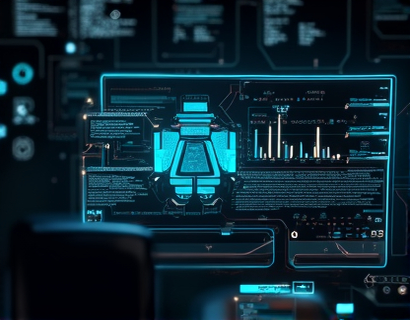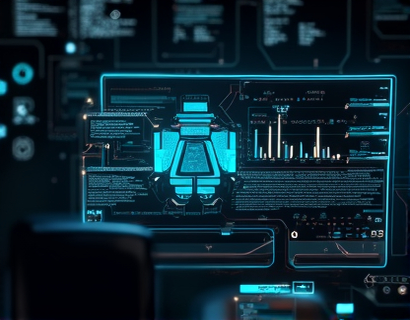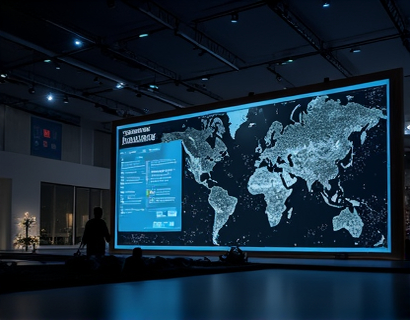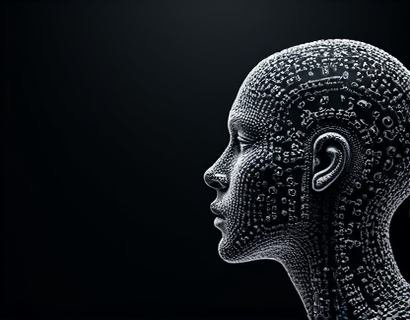AI-Powered Urban Insights: Transforming Urban Living Through Interactive Chat Technology
The urban landscape is undergoing a profound transformation, driven by technological advancements and the increasing need for sustainable, efficient, and livable cities. At the forefront of this change is the integration of Artificial Intelligence (AI) in urban management and services. An innovative approach to harnessing AI's potential is through interactive chat interfaces, designed to provide specialized insights into smart city services and industry trends. This article delves into the capabilities and benefits of such a platform, particularly focusing on its educational and child-friendly versions, aimed at urban innovators, educators, and students.
Understanding AI-Powered Urban Insights
AI-powered urban insights represent a convergence of technology and urban planning, leveraging machine learning, natural language processing, and big data analytics to offer real-time, data-driven information. These systems can process vast amounts of data from various sources, including sensors, social media, and official city databases, to provide users with comprehensive and up-to-date information on urban services, traffic, public safety, environmental conditions, and more.
The core functionality of an AI chat interface lies in its ability to engage users in a conversational manner, answering queries, providing recommendations, and offering educational content. This interactive approach not only enhances user experience but also makes complex information more accessible and understandable. For urban residents, this means easier access to services, better decision-making, and a deeper understanding of the smart technologies that shape their daily lives.
Enhancing Urban Services Through AI Chat
One of the primary applications of AI chat in urban settings is the enhancement of city services. Residents can use the chat interface to report issues such as potholes, broken streetlights, or litter, and receive immediate updates on the status of these reports. The system can also provide information on public transportation schedules, real-time traffic conditions, and available parking spots, significantly reducing commuting stress and improving overall mobility.
Moreover, AI chat can facilitate access to a wide range of services, from utility payments and permit applications to health and educational resources. By streamlining these processes, cities can increase efficiency, reduce administrative burdens, and ensure that residents have easy and convenient access to the services they need.
Industry Trends and Innovations
The integration of AI in urban management is not just a trend but a necessary evolution in response to growing urban populations and environmental challenges. Cities worldwide are adopting smart technologies to optimize resource usage, enhance public safety, and improve the quality of life for residents. AI chat interfaces play a crucial role in this transformation by serving as a direct line of communication between citizens and city services.
Industry trends indicate a shift towards more personalized and proactive services, where AI systems predict and address user needs before they are explicitly stated. For example, an AI chat could suggest the most efficient route to a destination based on current traffic data, or alert a resident to upcoming community events and services relevant to their interests. This level of personalization enhances user satisfaction and fosters a stronger connection between citizens and their city.
Educational and Child-Friendly Features
Recognizing the importance of education in fostering a smart and informed citizenry, the AI chat platform includes specialized educational content and a child-friendly version. This ensures that the benefits of AI-powered urban insights are accessible to all age groups, promoting digital literacy and awareness from a young age.
The educational version of the chat interface offers curated information on topics such as sustainable living, renewable energy, urban ecology, and the history of city planning. It uses engaging and simplified language, along with interactive elements like quizzes and games, to make learning enjoyable and effective. This approach not only educates children but also encourages them to think critically about the urban environment and their role in shaping it.
The child-friendly version of the chat is designed with safety and privacy in mind. It includes strict content filters to ensure that all information provided is appropriate and accurate. Parents and educators can monitor usage and receive reports on the child's interactions, providing peace of mind and opportunities for further discussion and learning.
Benefits for Urban Innovators and Educators
For urban innovators and educators, the AI chat platform offers a powerful tool for research, collaboration, and community engagement. Innovators can use the platform to gather insights on public perceptions and needs, informing the development of new smart city solutions. Educators can integrate the chat into their curricula, using it as a resource for project-based learning and real-world problem-solving exercises.
The platform also facilitates the creation of online communities where users can share ideas, discuss challenges, and collaborate on projects. This community aspect fosters a culture of innovation and continuous improvement, essential for the sustainable development of urban areas.
Content Verification and Trust
One of the key advantages of an AI-powered chat interface is its ability to ensure content verification. In an era where misinformation can spread rapidly, the accuracy of information is paramount. The platform employs advanced algorithms and human oversight to verify the data and insights provided, ensuring that users receive reliable and trustworthy information.
This commitment to accuracy builds trust between the city and its residents, encouraging more people to engage with the platform and utilize the services it offers. For urban innovators and educators, this trust is crucial for promoting the platform within their networks and advocating for its adoption in various settings.
Future Prospects and Challenges
As AI technology continues to advance, the potential applications of AI-powered chat interfaces in urban settings will only expand. Future developments may include more sophisticated natural language understanding, enhanced personalization, and integration with other smart city technologies such as IoT devices and blockchain for secure data management.
However, the adoption of such platforms also comes with challenges, including ensuring data privacy, addressing digital divides, and maintaining public trust. Cities must prioritize transparency, user control, and ethical AI practices to overcome these challenges and fully realize the benefits of AI in urban management.
Conclusion
The integration of AI-powered chat interfaces in urban living represents a significant step forward in creating smarter, more responsive, and more inclusive cities. By providing specialized insights, enhancing services, and offering educational resources, these platforms empower residents, innovators, and educators alike. As cities continue to evolve, the role of AI in shaping a sustainable and livable future will become increasingly vital. Embracing these technologies not only improves the quality of urban life but also prepares us for the challenges and opportunities of the digital age.











































